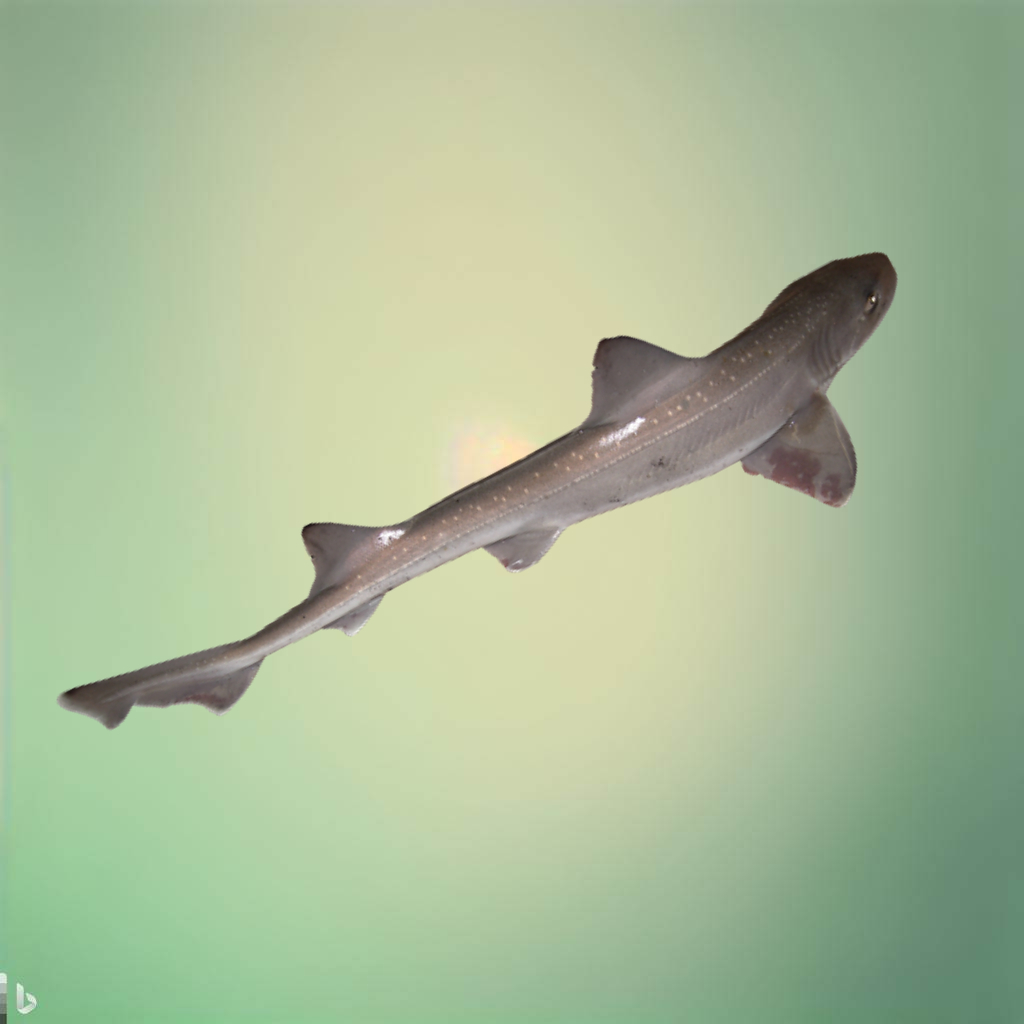Starry smooth-hound shark

The starry smooth-hound showcases an elegant and slender physique, reaching an impressive length of approximately 140 cm (55 in). This houndshark species exhibits a beautiful gray or grayish-brown coloration, adorned with delicate white spots on its dorsal surface and a pristine white underbelly. With its elongated body, gently rounded snout, and rows of shallowly projecting teeth, the starry smooth-hound captivates both scientists and nature enthusiasts alike. Notably, its two dorsal fins boast a similar shape, with the hindmost fin being slightly smaller than the foremost. The caudal fin displays a distinctive notch in the upper lobe, while the lower lobe remains of medium size.
Distribution and Habitat: Exploring the Depths
The starry smooth-hound thrives in the eastern Atlantic Ocean and the Mediterranean Sea, carving out its domain across a vast range. From the southern waters of Norway, Scotland, and the North Sea to the coastal areas of Algeria, Morocco, and the Western Sahara, this species has established a notable presence. While it can be found throughout the Mediterranean region, it does not venture into the Black Sea. The starry smooth-hound demonstrates a preference for habitats along the continental shelf, as well as areas surrounding islands, typically residing at depths of up to 200 m (660 ft). It particularly favors sandy or gravelly seabeds, providing an ideal environment for its unique way of life.
Recently, there have been intriguing observations of the starry smooth-hound within unexpected locations. In 2021, this species was discovered in the Thames River of London, demonstrating its adaptability and ability to explore new environments. Furthermore, in April 2022, the starry smooth-hound made its presence known in the breathtaking Plymouth National Marine Park, leaving marine biologists and conservationists in awe of its versatility.
Biology: An Insight into Feeding Habits and Reproduction
The starry smooth-hound sustains itself primarily on a diet consisting of crustaceans such as crabs, lobsters, and slipper lobsters, as well as mollusks. With its specialized feeding adaptations, this houndshark efficiently captures and consumes its preferred prey. Maturing at a length of approximately 80 to 85 cm (31 to 33 in), the starry smooth-hound exhibits an intriguing reproductive strategy. It is an ovoviviparous species, meaning it retains its eggs within its oviduct. The developing embryos receive nourishment from the egg yolk and the secretions of the oviduct, allowing them to grow and develop until birth. Each litter typically consists of seven to fifteen young, measuring around 30 cm (12 in) in length when they enter the world.
Conservation Status: A Species of Concern
In assessing the conservation status of the starry smooth-hound, the International Union for Conservation of Nature (IUCN) designates it as "near threatened" on its Red List of Threatened Species. Within the Mediterranean Sea, this houndshark species is relatively less abundant and faces significant pressures due to human consumption. Alongside the closely related common smooth-hound (Mustelus mustelus), the starry smooth-hound is actively targeted for its meat. While its population remains healthy in other regions, the Mediterranean population has experienced a decline, warranting consideration for "Vulnerable" status if not for its more plentiful existence elsewhere.


